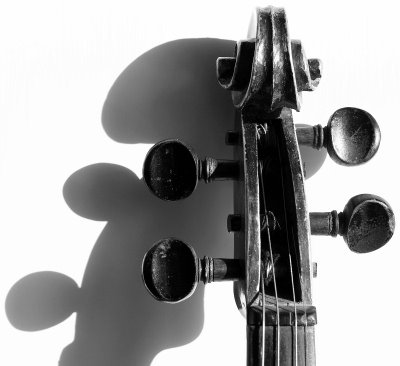The actions of that small child opened my eyes to two things. Firstly, how we take for granted our understanding of our world, and secondly, how easily we forget what a marvellous phenomenon the shadow is, and how it greatly enriches our visual experience.
I took this photograph of the head of a battered violin in the late afternoon so that its shadow could be an important part of the image. I placed it on the smoothest, whitest paper I could find, and metered the shot off the violin so that the resulting image would have something of a "high key", slightly overexposed effect. To emphasise this I converted the colour image to black and white, and then, to take it up a further notch, I used the software equivalent of a red filter. The final effect is close to what I wanted. However, the shadow that an object will throw is sometimes difficult to predict. And, effectively pricking my feelings about the seriouness of my photograph, someone who saw this one said it looked like a cartoon 1950s Rocker, with a quiff, blowing bubblegum!
photograph & text (c) T. Boughen
